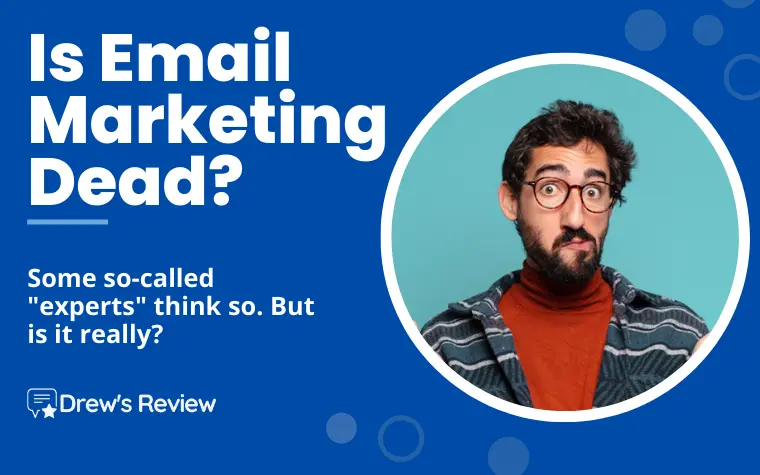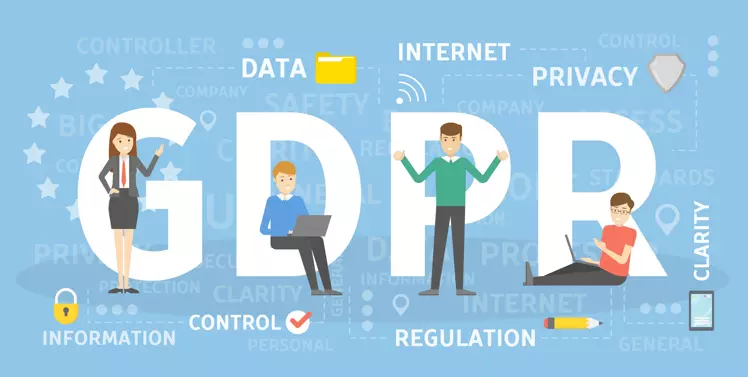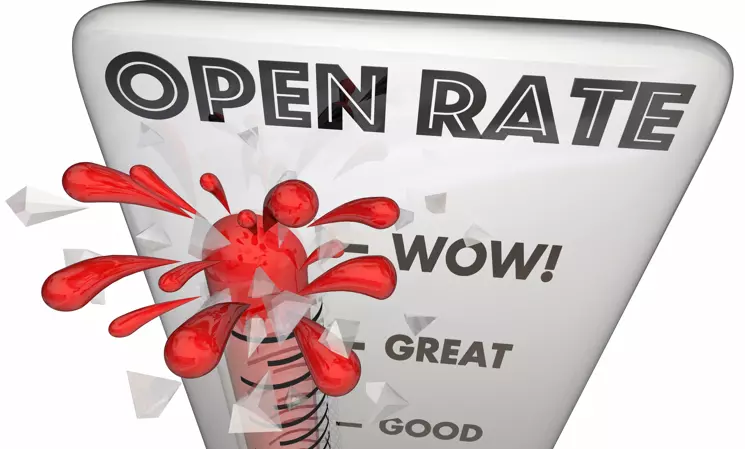
Email marketing has been around longer than social media, SEO, and even most modern websites — yet it remains one of the highest-ROI marketing channels in existence.
In 2025, over 4.6 billion people use email daily (Statista), and that number keeps growing. Businesses continue to rely on email because it consistently outperforms every other channel when it comes to:
- ROI
- message delivery
- customer retention
- overall sales generated
And despite the rise of TikTok, Instagram Reels, AI chatbots, and short-form content, 74% of consumers still prefer to receive business messages through email. It’s the one channel people expect to check — not scroll past.
So why do people still ask whether email is “dead”?
Simple: marketing evolves. AI tools, privacy changes, Apple Mail updates, deliverability rules, and competition inside the inbox have all shifted how email works today. But that doesn’t mean email marketing is dying…
It means bad email marketing is dying — and that’s good news.
Why do People Ask, “Is email Marketing Dead?”

Every year someone predicts the “death” of email marketing — and every year, email quietly continues outperforming almost every other marketing channel. So why does this myth keep coming back?
Here are the real reasons people think email is fading (especially in 2025):
1. Social media looks louder and more exciting.
Platforms like TikTok, Instagram, and YouTube pump out addicting, fast-moving content. Compared to that, email looks… boring. But impressions don’t equal trust — and social platforms change their algorithms constantly. Email doesn’t.
2. Inbox competition is higher than ever.
Everyone is emailing now — brands, influencers, SaaS companies, stores, you name it. When inboxes get crowded, people assume email is less effective. In reality, inbox competition only kills bad email, not good email.
3. Privacy changes shook the industry.
Apple Mail Privacy Protection and Gmail’s filtering updates made open rates less accurate. Many marketers panicked and assumed email was finished. But the brands who adapted (better segmentation, better content, better deliverability) actually saw higher engagement.
4. AI tools changed expectations.
With AI personalizing content everywhere, generic “newsletter blasts” stand out as lazy. So marketers assume email is dead — when in reality, poorly done email is what’s dying.
5. People misunderstand the data.
Email isn’t a flashy channel — it’s a revenue channel. While social gets the attention, email quietly delivers the conversions.
The truth?
Email isn’t dying. It’s evolving.
And the brands that evolve with it are seeing better results than ever.
Email Marketing Is Still Relevant — More Than Ever (2025/26 Update)
Despite what the “email is dead” crowd claims, the data tells a completely different story. Email remains one of the highest-performing channels in digital marketing, and it’s only getting stronger as businesses shift toward first-party data.
Here’s why email is still one of the most valuable tools you can use:
1. People trust email more than social media.
Social feeds are full of noise, ads, fake accounts, and endless distractions. Email is personal. It’s direct. And most importantly — it’s where customers go when they’re ready to buy, not just browse.
2. You own your email list — no algorithms involved.
Unlike Instagram, TikTok, or Facebook, you don’t “rent” an audience. You own it. No platform can take your list away, throttle your reach, or ban your account overnight.
3. Email consistently outperforms other channels.
Most email platforms report an average ROI of $36–$44 for every $1 spent, far higher than social or paid ads.
Why? Because email reaches people who already know you and WANT to hear from you.
4. Customers prefer email for business communication.
Even in 2025, the majority of consumers say email is still their favorite way to receive:
- updates
- promotions
- receipts
- order tracking
- personalized recommendations
It’s convenient, familiar, and easy to search — something social media can’t replicate.
5. Email is adaptable.
Whether you're a blogger, eCommerce seller, affiliate marketer, freelancer, or SaaS company, email fits every business model. You can nurture leads, promote offers, upsell customers, or build a community — all from a simple inbox.
So yes, email is very much alive. Companies relying on it today aren’t struggling — in fact, many are doubling down because it continues to deliver predictable, reliable revenue month after month.
What Poor Email Marketing Practices Really Need to Go?

Email marketing isn’t dying — but bad email marketing absolutely is. In 2025, inboxes are smarter, privacy standards are tighter, and customers expect more from the brands they follow.
Here are the outdated email practices that need to disappear ASAP:
1. Sending Emails Without Proper Permission
This should go without saying, but some businesses still send cold blasts to people who never opted in. Besides being ineffective, it can hurt deliverability and get your domain flagged.
Modern email rules (GDPR, CAN-SPAM, CASL, and Apple Mail privacy updates) all point to the same thing:
✅ Only email people who actually want to hear from you.
A healthy, engaged list always outperforms a big, unqualified one.
And if you’re sending emails, you also need to make sure your subscribers know how to identify safe communication. I wrote a full guide on how to detect fraudulent emails and phishing attempts — worth a read if you want to keep your audience protected
2. Generic Subject Lines and Impersonal Content
Your subscribers are drowning in emails. If yours looks like it was written by a robot from 2015, they’ll skip it instantly.
Personalized subject lines and tailored content have become the norm — not the exception.
Examples of what not to do:
❌ “Newsletter #14 – February Updates”
❌ “Check this out”
❌ “We have something for you”
Instead, aim for:
✅ curiosity
✅ relevance
✅ personalization
✅ benefit-driven messaging
Even simple personalization (name, behavior, products viewed, interests, timing) boosts opens and clicks.
3. Ignoring Mobile Users

Over 70% of all email opens happen on mobile devices now.
If your emails aren’t optimized for small screens, they’re getting deleted fast.
Mobile-friendly emails should have:
- short sentences
- scannable sections
- clickable buttons
- minimal clutter
- responsive design
If someone has to pinch and zoom, it’s over.
4. Sending Every Subscriber the Same Message
Mass broadcasts are dead.
Segmentation is where conversions happen.
Segment by things like:
- interests
- past purchases
- engagement history
- location
- activity on your site
- abandoned carts
- lifetime value
The more relevant the message, the more money you make.
5. Overwhelming People With Too Much Information
Nobody wants to read an essay inside their inbox. Email isn’t a blog post — it’s a teaser.
Short, focused emails get more engagement.
Long-winded monologues get skimmed or ignored.
A good rule of thumb:
✅ One email = one purpose.
6. Sending Emails Without Tracking Metrics
If you’re not checking:
- clicks
- conversions
- list health
- engagement
- deliverability
- revenue per email
…you’re flying blind.
Modern email tools (like GetResponse, MailerLite, Klaviyo, and ActiveCampaign) give real-time analytics. Use them. Let the data guide your strategy — not assumptions.
7. Treating Email Like a Sales Megaphone
People don’t mind being sold to…
They mind being spammed.
If every email is just “Buy this!” or “Sale ends tonight!” you’ll lose subscribers fast.
Balance is everything:
✅ value
✅ education
✅ storytelling
✅ entertainment
✅ THEN promotions
If you give 80% value, the 20% selling works effortlessly.

How to Keep Emails Fun and Interesting to Read
Email design should be fun and engaging to read. In fact, it should be entertaining enough to make you want to open the email and read it. If your emails are boring, people won’t bother opening them.
So how do you make sure your emails are fun and interesting to read? Here are four tips to help you out.
1. Keep it Short
Typically, most people don’t like reading long emails. They prefer shorter ones because they can scan quickly and decide whether they want to continue reading. You can use bullet points to break up the text into smaller chunks. This way, people can easily skim over the important parts without having to spend too much time on each one.
2. Use Images
Images are great tools to engage your audience. They can grab attention and make your subject matter stand out. When designing your emails, think about what type of image works best for your brand. For example, if you sell clothing, you might choose something colorful and eye-catching. On the other hand, if you sell financial products, you could opt for a simple black and white photo.
3. Add Videos
Videos are another effective tool to engage your audience. Videos are easy to watch and digest, which makes them perfect for longer messages. People love watching videos online, especially those that entertain them. Make sure your videos include relevant information and are well-produced.
4. Use a Good Email Marketing Software Tool
Email autoresponders, or email marketing tools as they are more commonly referred to today, are great for helping you design the right emails. For example, if you're a blogger, it's best to send text only emails. If you're a small business owner, you might want to spice it up with images or even videos.
There's a lot of email marketing tools available. Choose one that fits your budget and your needs.

5. Offering Too Much Information
Email marketing is one of the most effective ways to communicate with customers and prospects. But it’s important to keep things simple and avoid sending too much information. Attention spans are shorter than ever, so your emails should be clear, focused, and easy to skim.
What Are the Best Practices for Ensuring That Your Email Marketing Strategy Is Effective?
1. Start With a Clean, Opt-In Email List
A good email strategy starts with a high-quality list. You want subscribers who chose to hear from you — not people who were tricked into it or randomly added through a third-party tool.
A clean list leads to:
✅ higher deliverability
✅ better open rates
✅ fewer spam complaints
✅ more sales
Focus on attracting people who actually want your content. Quality > quantity every time.
2. Send Valuable Emails Consistently
If you email once every 4 months, your audience will forget who you are. If you email 3 times a day, they’ll unsubscribe.
Aim for a consistent rhythm you can maintain — weekly or bi-weekly works great for most businesses.
And make sure your emails contain actual value, such as:
- helpful tips
- quick wins
- tutorials
- insights
- product recommendations
- personal stories
Value earns trust. Trust earns clicks. Clicks earn sales.
3. Write Strong Subject Lines (They Matter More Than Ever)
If your subject line doesn’t grab attention, nothing inside the email matters — because they won’t open it.
Great subject lines are:
✅ short
✅ curiosity-driven
✅ clear
✅ personal
✅ benefit-focused
People decide to open (or ignore) your email in seconds. Take the time to write subject lines that make them WANT to click.
4. Keep Your Emails Easy to Read and Mobile-Friendly
Most people open your email on their phone. If your formatting is messy or the text looks like a wall of writing, they’ll give up immediately.
Make your emails scannable:
- short sentences
- short paragraphs
- clear headings
- bullet points
- bolding when needed
- big, tappable CTAs
Think: “How would this look if I were reading it while standing in line at Starbucks?”
5. Segment Your Audience for Higher Conversions
Sending everyone the same blast email is a guaranteed way to kill engagement. Your subscribers have different interests, levels of awareness, and behaviors — don’t treat them all the same.
Smart segmentation leads to:
✅ more opens
✅ more clicks
✅ higher sales
Segment using things like:
- purchase history
- email activity
- location
- interests
- abandoned cart behavior
- customer lifetime value
Even simple segmentation can make a massive difference.
6. Use Clear, Direct CTAs (Don’t Make People Guess)
Every email should have one clear purpose.
Not five. Not three. One.
If you want them to click, say it: “Read the full article.”
If you want them to buy, say it: “Get 20% off today.”
If you want them to reply, say it: “Hit reply and let me know.”
People don’t like guessing what you want from them — so make it obvious.
7. Track Your Metrics and Adjust Your Strategy
Email success isn’t guesswork — it’s data. The numbers tell you what’s working and what isn’t.
Track things like:
- open rate
- click-through rate
- conversions
- revenue per email
- unsubscribes
- list growth
- engagement over time
Tools like GetResponse, MailerLite, Klaviyo, and ActiveCampaign give you everything you need. Pay attention to trends and adjust accordingly.
8. Always Include a Visible Unsubscribe Link
It sounds small, but it’s important. Keeping people “trapped” on your list destroys your deliverability. When someone wants out, let them go.
Your emails should feel like an invitation — not a hostage situation.
Conclusion
So… is email marketing dead? Not even close. If anything, it’s more powerful than ever. The only thing that’s “dying” is outdated, spammy email marketing that adds no value.
Consumers are still checking their inboxes multiple times a day. Brands are still making huge ROI from email. And businesses that take the time to send helpful, relevant, well-timed emails are still winning — every single year.
Email continues to work because it’s personal. It’s direct. And unlike social media, you actually own your audience. No algorithm can take that away from you.
If you want to succeed with email marketing going forward, keep it simple:
✅ send valuable content
✅ personalize your messaging
✅ respect your subscribers
✅ track your results
✅ and don’t send emails “just because”
Do that consistently, and you’ll build trust, start more conversations, and turn your email list into one of the most profitable assets in your entire business.
If you have any questions on how to improve your email marketing, drop a comment below — happy to help!
Liked this article? Consider sharing!
You might also like...
- Top Affiliate Marketing Trends to Watch in 2026 - November 12, 2025
- Smart Way Businesses Improve Customer Care with Live Answering - November 12, 2025
- 8 Effortless AI Business Name Generators - November 11, 2025
